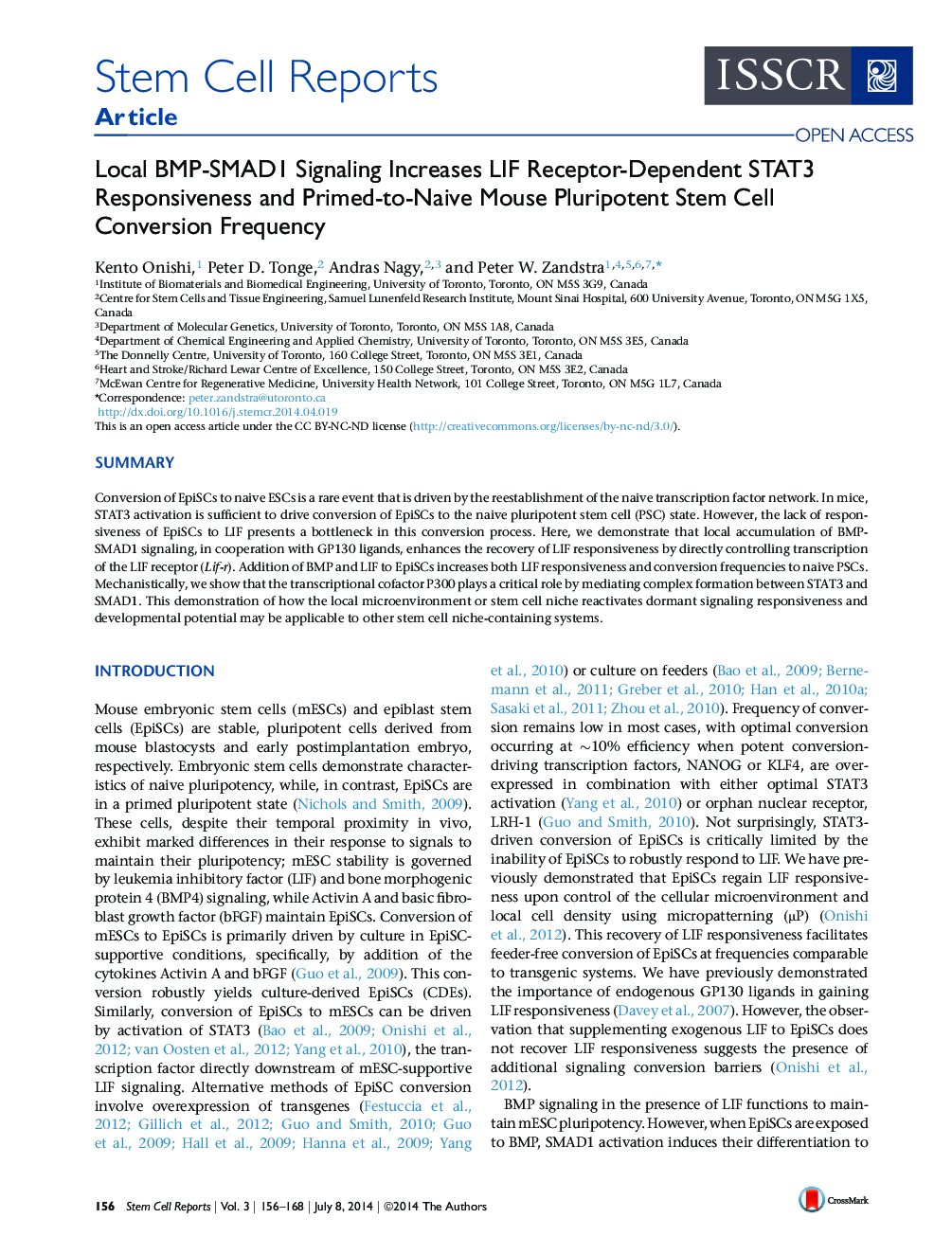| Article ID | Journal | Published Year | Pages | File Type |
|---|---|---|---|---|
| 2093388 | Stem Cell Reports | 2014 | 13 Pages |
•Addition of BMP increases mouse EpiSC-to-ESC conversion frequency•Accumulation of BMP and gp130 ligands resuscitates JAK-STAT signaling in EpiSCs•BMP and gp130 ligands control LIF-R transcription•p300 mediates STAT3-SMAD1 complex to control LIF responsiveness
SummaryConversion of EpiSCs to naive ESCs is a rare event that is driven by the reestablishment of the naive transcription factor network. In mice, STAT3 activation is sufficient to drive conversion of EpiSCs to the naive pluripotent stem cell (PSC) state. However, the lack of responsiveness of EpiSCs to LIF presents a bottleneck in this conversion process. Here, we demonstrate that local accumulation of BMP-SMAD1 signaling, in cooperation with GP130 ligands, enhances the recovery of LIF responsiveness by directly controlling transcription of the LIF receptor (Lif-r). Addition of BMP and LIF to EpiSCs increases both LIF responsiveness and conversion frequencies to naive PSCs. Mechanistically, we show that the transcriptional cofactor P300 plays a critical role by mediating complex formation between STAT3 and SMAD1. This demonstration of how the local microenvironment or stem cell niche reactivates dormant signaling responsiveness and developmental potential may be applicable to other stem cell niche-containing systems.
Graphical AbstractFigure optionsDownload full-size imageDownload as PowerPoint slide
